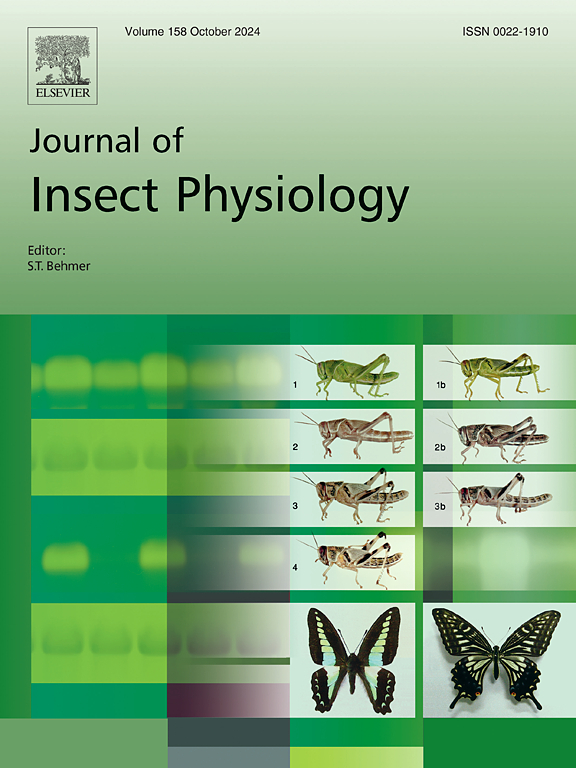核糖核酸介导的核受体的敲低通过破坏几丁质代谢途径损害毛癣的角质层形成
IF 2.3
2区 农林科学
Q1 ENTOMOLOGY
引用次数: 0
摘要
核受体是配体调控的转录因子,在昆虫生长发育过程中起着至关重要的作用。然而,它们在福尔德曼氏赤斑病中的功能仍不明确。在这项研究中,我们鉴定和表征了三种来自红腹草的honr。时空表达分析表明,3种honr均在卵和1龄幼虫中显著表达。组织定位在表皮、脂肪体和直肠高表达。RNA干扰(RNAi)实验表明,沉默这些honr降低了幼虫的摄食,损害了蜕皮,导致37 - 50%的体重抑制率和73 - 93%的死亡率。苏木精-伊红染色显示,与对照组相比,HoHR3、HoE75和HoEcR的敲低导致角质层的形成更薄,同时几丁质含量减少46 - 48%,几丁质代谢途径基因下调。此外,20E在不同时间点对这些honr的表达有影响。因此,这些研究结果表明,这3种honr通过调节几丁质代谢途径,对黄颡鱼正常蜕皮至关重要。本文章由计算机程序翻译,如有差异,请以英文原文为准。

Rnai-mediated knockdown of nuclear receptors impairs cuticle formation by disrupting chitin metabolic pathway in Holotrichia oblita
Nuclear receptors (NRs) are ligand-regulated transcription factors that play crucial roles in insect growth and development. However, their functions in Holotrichia oblita Faldermann remain uncharacterized. In this study, we identified and characterized three HoNRs from H. oblita. Spatiotemporal expression analysis revealed that all three HoNRs were predominantly expressed in eggs and first-instar larvae. Tissue localization showed high expression in the epidermis, fat body, and rectum. RNA interference (RNAi) experiments demonstrated that silencing these HoNRs reduced larval feeding, impaired molting, and resulted in a 37–50 % weight inhibition rate and a 73–93 % mortality rate. Hematoxylin-eosin staining showed that knockdown of HoHR3, HoE75, and HoEcR led to the formation of a thinner cuticle compared to controls, accompanied by a 46–48 % reduction in chitin content and downregulation of chitin metabolic Pathway genes. Additionally, the expression of these HoNRs was influenced by 20E at different time points. Therefore, these findings demonstrate that these three HoNRs are essential for normal molting in H. oblita through chitin metabolic pathway regulation.
求助全文
通过发布文献求助,成功后即可免费获取论文全文。
去求助
来源期刊

Journal of insect physiology
生物-昆虫学
CiteScore
4.50
自引率
4.50%
发文量
77
审稿时长
57 days
期刊介绍:
All aspects of insect physiology are published in this journal which will also accept papers on the physiology of other arthropods, if the referees consider the work to be of general interest. The coverage includes endocrinology (in relation to moulting, reproduction and metabolism), pheromones, neurobiology (cellular, integrative and developmental), physiological pharmacology, nutrition (food selection, digestion and absorption), homeostasis, excretion, reproduction and behaviour. Papers covering functional genomics and molecular approaches to physiological problems will also be included. Communications on structure and applied entomology can be published if the subject matter has an explicit bearing on the physiology of arthropods. Review articles and novel method papers are also welcomed.
 求助内容:
求助内容: 应助结果提醒方式:
应助结果提醒方式:


